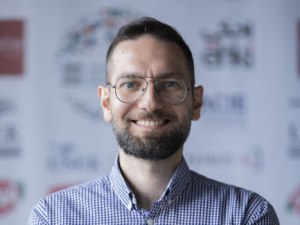Without a doubt, multitudes of factors have transformed operational models and traditional workplaces. With the advancement of technology, the shift from pre to post COVID eras, the prevalence of hybrid models, and a more conscious approach to business, the generational gap between Gen Y and Gen Z is growing.
Some of the larger organizations have identified the key differences and are working towards bridging the divide. However, organizations across the board are still struggling, when it comes to knowing how to effectively manage and retain Gen Z team members.
BDD sat with Dr. Sally Hammoud (SH), a Communication & Media Consultant with expertise in strategic planning, training design and facilitation, and change management, to discuss why generational gaps are so prevalent, and what can be done to bridge them.
BDD: Firstly, how important is change management in today’s world?
SH: There is a lot of interest in this topic from companies and leaders in a wide array of industries. It is a growing pain point for businesses that are transitioning between generations. The biggest issue from my experience, is how more senior managers need to adapt and work with a new generation, who have different ideals and values.
As a change management expert, there are a few things that companies can do to stay ahead, such as optimizing their operations and adapting to the changes that are taking place in the industry and the context they exist in.
BDD: COVID has definitely led to many transformations. Can you share the impact of the pandemic on businesses?
SH: How COVID disrupted businesses was a huge wake up call, and the importance of change management became clearer. Pre-COVID, it was considered as something auxiliary, where not all organizations had a change management strategy in place. In addition, advancements in technology greatly changed how we go about business. Hence, the rise of the generational gap.
BDD: What are the key shifts you have witnessed?
SH: Firstly, the structure of companies has shifted and changed a lot, due to digital transformations. We find changes in values, policies and procedures, as well as operational models. This is where the conflict arises between Gen Y and Gen Z professionals.
As Gen Z now make up a big percentage of the workforce, companies depend on them for front line management, which is basically to get the job done. However, middle and executive management are the ones who supervise Gen Z professionals. And so, an issue arises, where a change in management needs to be addressed.
BDD: What changes do companies going through this shift need to account for?
SH: Alongside digital transformations, there is also a hyper personalization of services and products. In addition, digital reputation is paramount. AI and language build digital reputations, and brand equity for any organization exists in the online sphere, which is now considered our “real world”.
We also see the youth wanting to work for companies that align with their values and seek operational models that offer them more flexibility at work. They also have a more conscious approach to working with companies that do good.
Moreover, with the adoption of tech and in the post-COVID era, we find that managerial structures are becoming more horizontal. New organizational structures emerged, and operational models and management structures are more spread. Before we had the CEO and CFO, and now we have room for CTO, CIO, CMO etc. This impacts how Gen Z interact in the workplace.
BDD: We see many youth pursuing entrepreneurial ventures, then reenter the workforce. What challenges does this pose?
SH: Entrepreneurship is on the rise. We see this in Lebanon, where we have a hype in education levels. The number of people graduating from university has tripled, and industries are not able to absorb this amount of professionals, both locally and regionally. So a majority of the youth have to stay and work in Lebanon.
What poses an additional challenge in Lebanon is the ongoing economic crisis, as well as a lack of social services (infrastructure of social services). And so, alternatives emerge, where the youth come up with ideas that cover the needs of the community. This has led to a rise in pushing youth towards entrepreneurship. Whilst this is good, as it fosters creativity and innovation, it also creates an alternative economy and alternative governance.
However, there are also drawbacks to this. When you sit with the youth who do not have any formal work experience, not even an internship, and they appoint themselves as CEOs of companies, and expect the same when employed. Circular 331, for example, which was not based on a vision, nor was sustainable, also lead to this.
Accordingly, as many of their ventures fail and they need to reenter the workforce, they want to impose their ideals on their Gen Y managers, which does not work.
BDD: What role do you think social media plays in creating a bigger generational gap?
SH: The hype of social media began around 2012. It created personas that mirror what entrepreneurship needs to look like. This affected the youth. Everyone wanted to incarnate what they were seeing on social media. They carried it with them. However, not all entrepreneurial projects succeed and not everyone is able to prosper or scale their business and make it sustainable. This also leads to the youth having to reenter the workforce… and the conflict continues.
BDD: What advice can you give to organizations who want to bridge the generational gaps?
SH: I would first start by asking them to understand the characteristics of Gen Z in the workplace. They are value driven, with higher consciousness. Social media definitely created more exposure and awareness.
Gen Z is also driven with purpose and want to create a social impact. Therefore, companies need to ensure sound operating models and have a social impact.
Gen Z is also more at ease. They want to be in touch with themselves where they work and want to have flexible hours. Companies should allow for this, of course, with rules in place. Hybrid models prove best if companies want to retain Gen Z professionals, and want them to develop.
Also, one prevalent characteristic amongst Gen Z, is that they want to learn and hone their experiences, and how the rise of large language models such as Chat GPT impact them. Therefore, companies should incorporate learning and development as a core part of their model.
To learn more about change management, get in touch with Dr. Sally Hammoud on her Linkedin.




